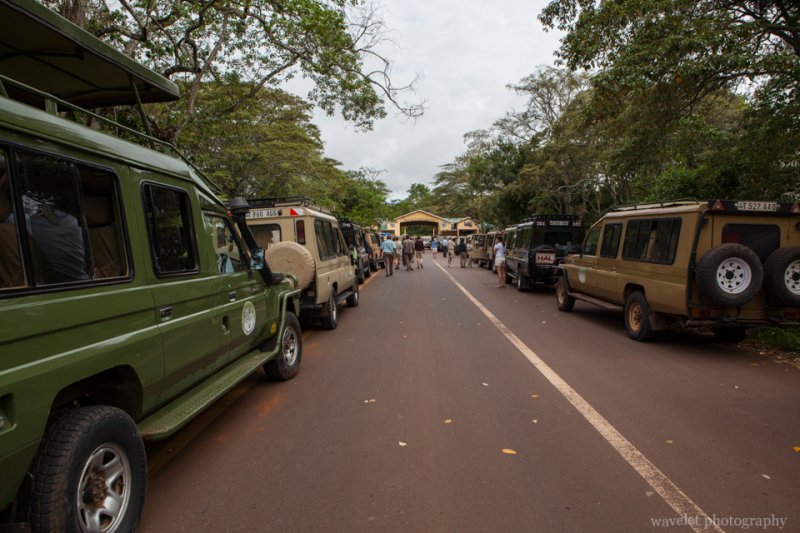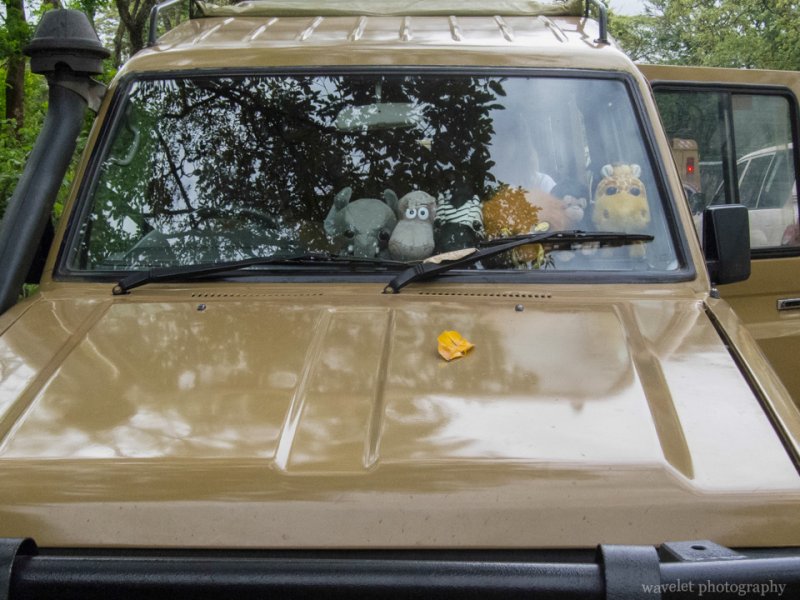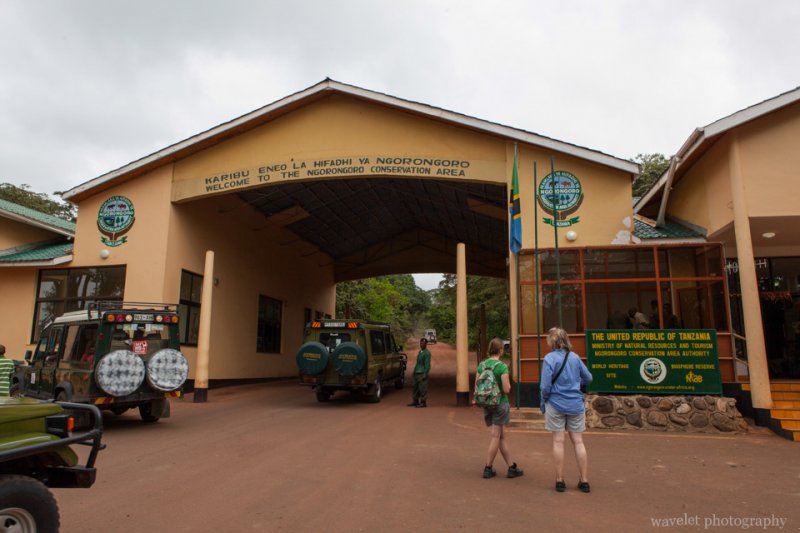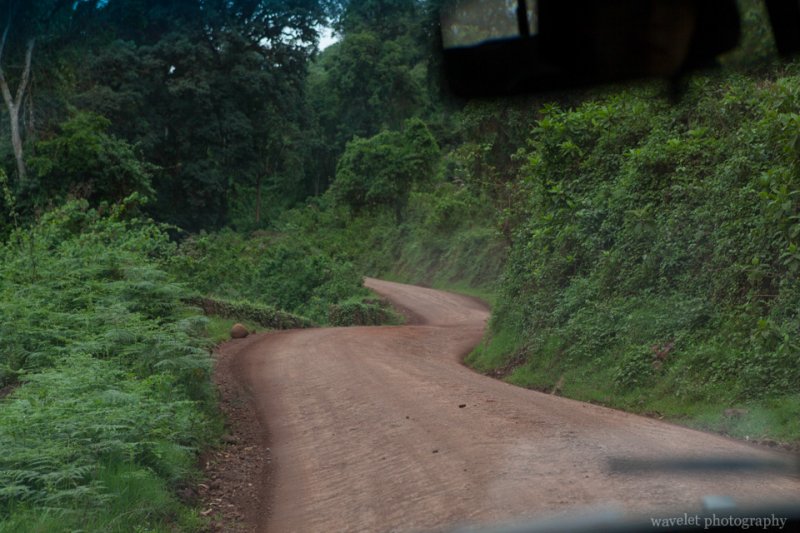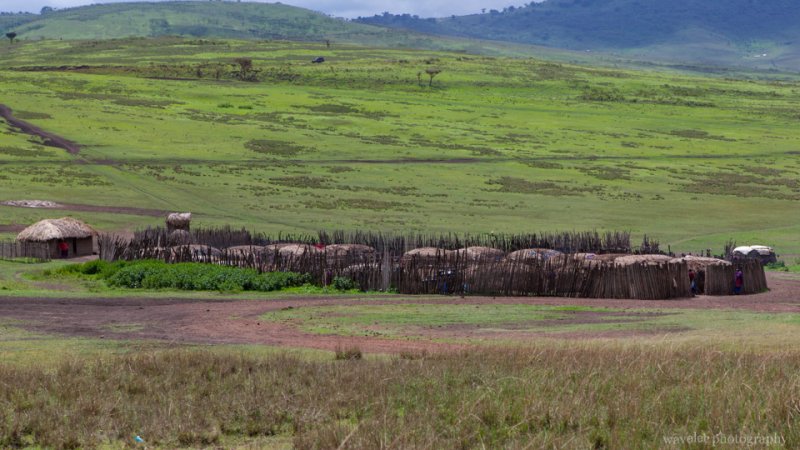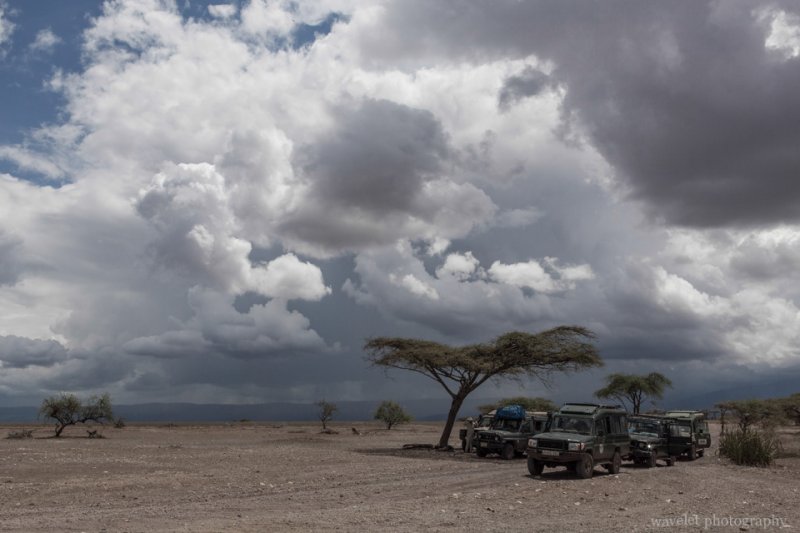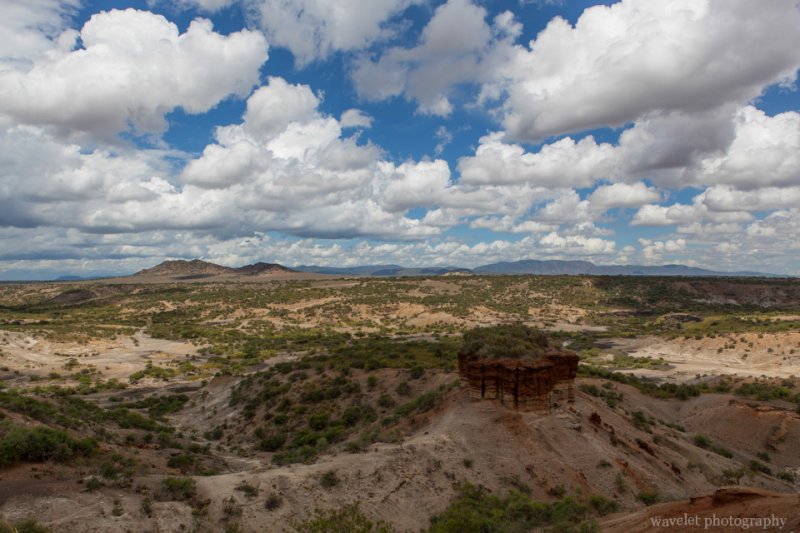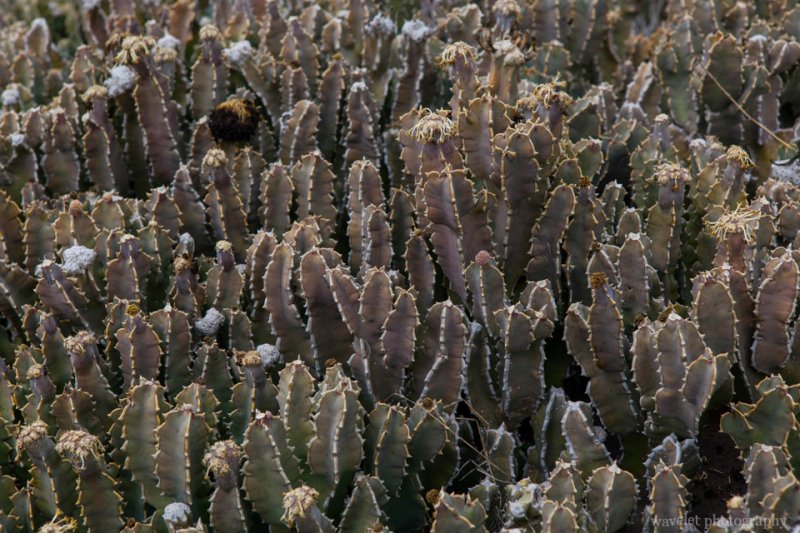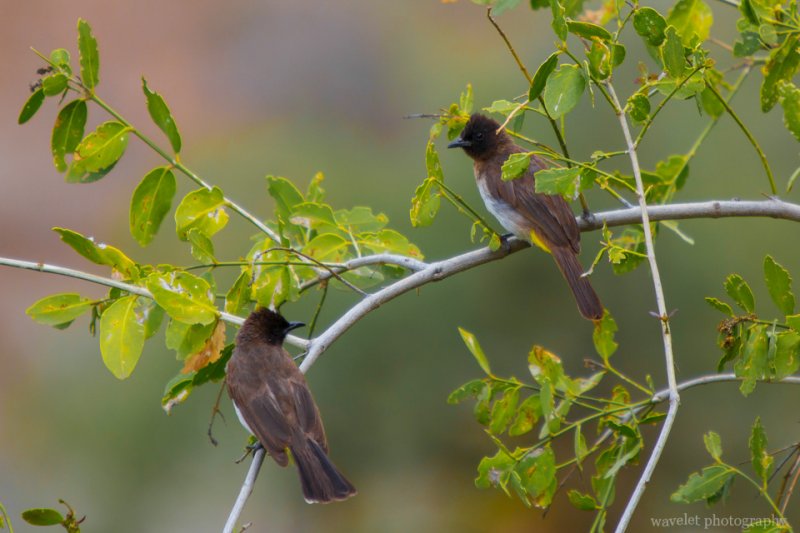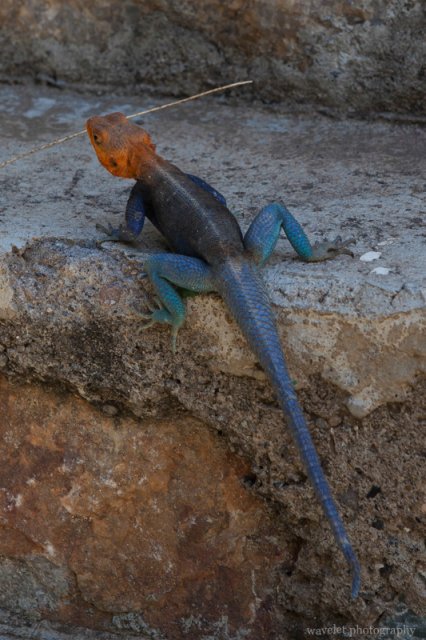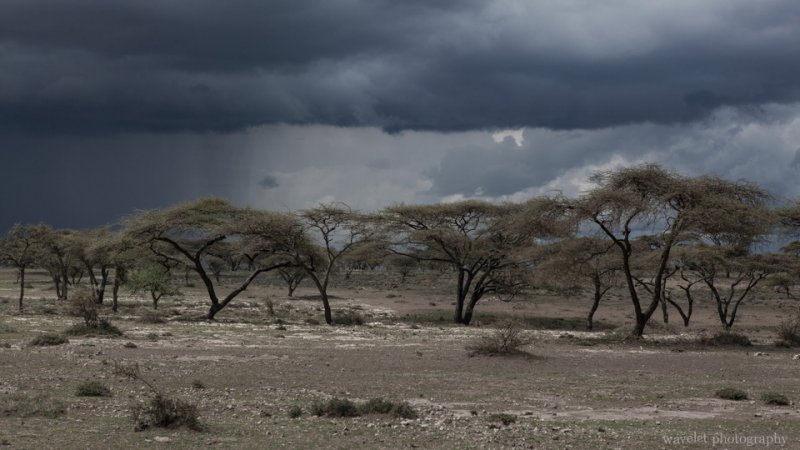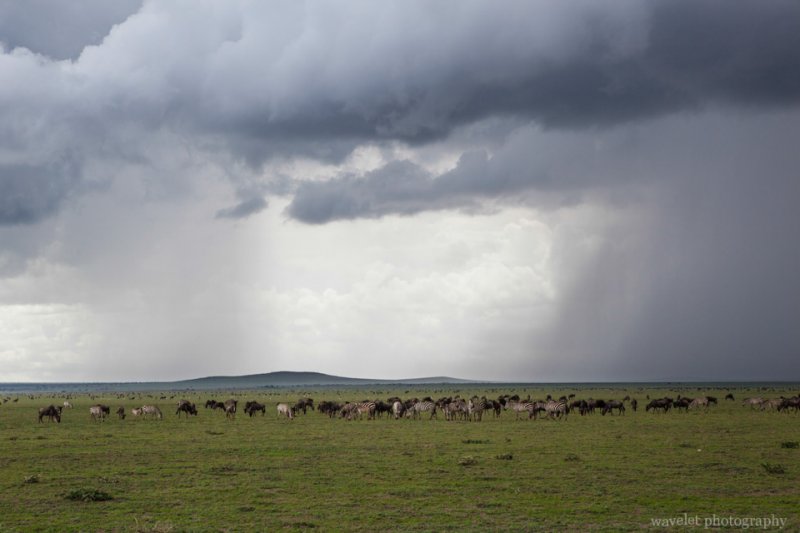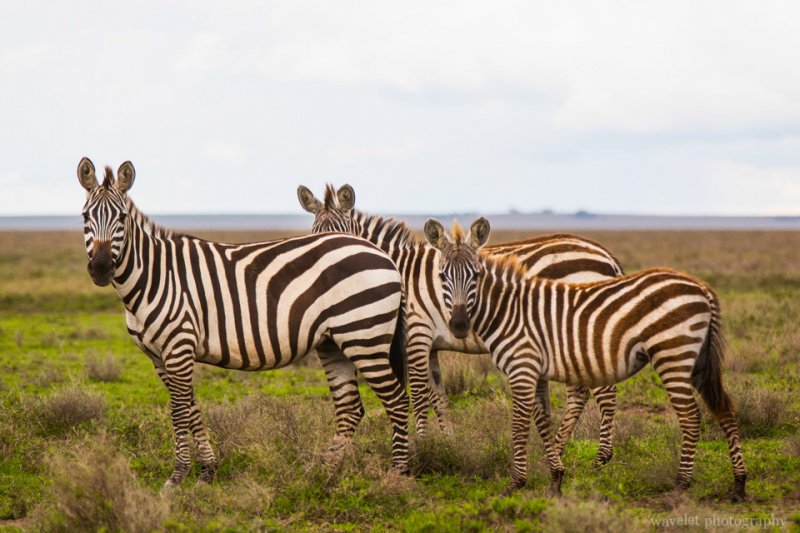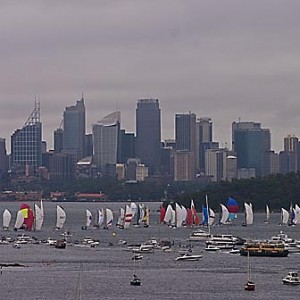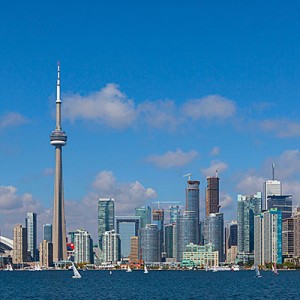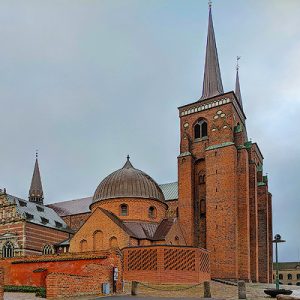2012.12.28We left Tindiga Tented Camp at 8:00am, drove back on the same road that we came upon. The distance seems much shorter on our way return. After 1 hour or so, we were so happy to be on the paved road again, but Justin told us it wouldn’t last long – it would be bumpy road all the way after passing Ngorongoro Crater.
Kept driving for 20 minutes, we were at the foot of Ngorongoro Crater. The road was jammed with safari jeeps in front of the entrance. The computer system was down, so the ticketing process moved very slowly. We took our time to see the exhibition in the visitor center while Justin was in line in a room filled with local guides waiting to buy the ticket. We noticed that almost all safari jeeps were Toyota Land Cruiser. Justin said that the model is sturdy and easy to maintain. The only downside compared to Land Rover is that Land Cruiser is heavier. During the rain season, it has greater chance to get stuck in the mud.
After 1 hour, the computer system recovered. We got the tickets and moved on. The eastern slope of Ngorongoro Crater rises 800 meters above the surrounding terrain. The easterly trade wind drops much of its moisture and creates the dense forest at this side of the crater.
The road runs on top of the crater ridge. The elevation is about 2300 meters (7500 feet). At the south side, there is a spot for visitors to overlook both inside and outside of the crater.
We would return to Ngorongoro and get to the crater floor on our last day of the trip. For now we just cycled half way around the crater ridge. At the western side, the annual precipitation is only half of that at the eastern slope, but still enough to support prosperous grassland. The lush and fresh greens cover the hillside and extend as far as eyes can see. Justin said that wealth is counted in the number of cattle one owns in Tanzania. People living here must be rich.
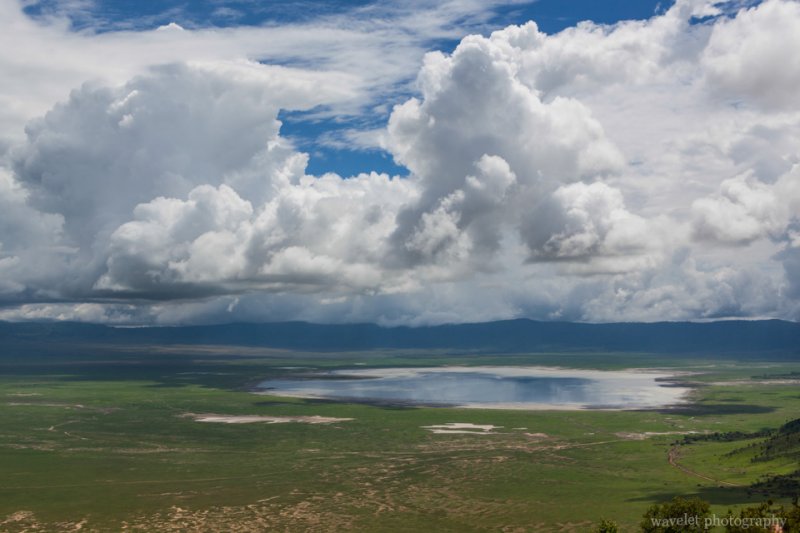
It’s amazing how fast the environment changes. After 30 minutes, we got off B144 and turned to the north. The grassland just disappeared and the area surrounding us was like a scrubby desert. Their is no clear mark of the road. We picked up a man near the main road and drop him off at the entrance of Oldupai Gorge.
Oldupai Gorge is also called Olduvai Gorge, which is a misspelling of Oldupai, a commonly found wild sisal plant in the area. It is one of the most important paleoanthropology sites in the world. Discovered in 1911, Oldupai has yielded many fossils of primitive hominid and stone tools dating back 2 million years ago in the layered sediments in the gorge. These finds convinced the world that humans originally evolved in Africa.
We had lunch at the resting area and listened to an lecture given by the man we picked up earlier. It’s interesting to see how the perception of a person can change so remarkably in different settings – he was a nobody in our car and now he is a authoritative scholar.
The visitor center holds educational exhibitions about discoveries in Oldupai Gorge and Laetoli, 30 miles south where the famous footprints made by early hominid 3.6 million years ago was found. It’s one of the earliest evidences of hominids walking upright. It’s fascinating to imagine the day that these 3 individuals walking side by side with elephants. The elephants must be thinking, “What a weird creature they are! Why do they walk with two feet?” In the following 3 million years, human has taken the world and elephants are still elephants. The museum has a map that illustrates the timeline of Homo sapiens’ migration paths out of Africa and expansion to the world.
We left Oldupai Gorge at about 2pm. The thunderstorms seemed so close, just behind those acacia trees.
Returning to B144, we started seeing hundreds of hundreds wildebeests and zebras. We were approaching the famous Serengeti National Park.
